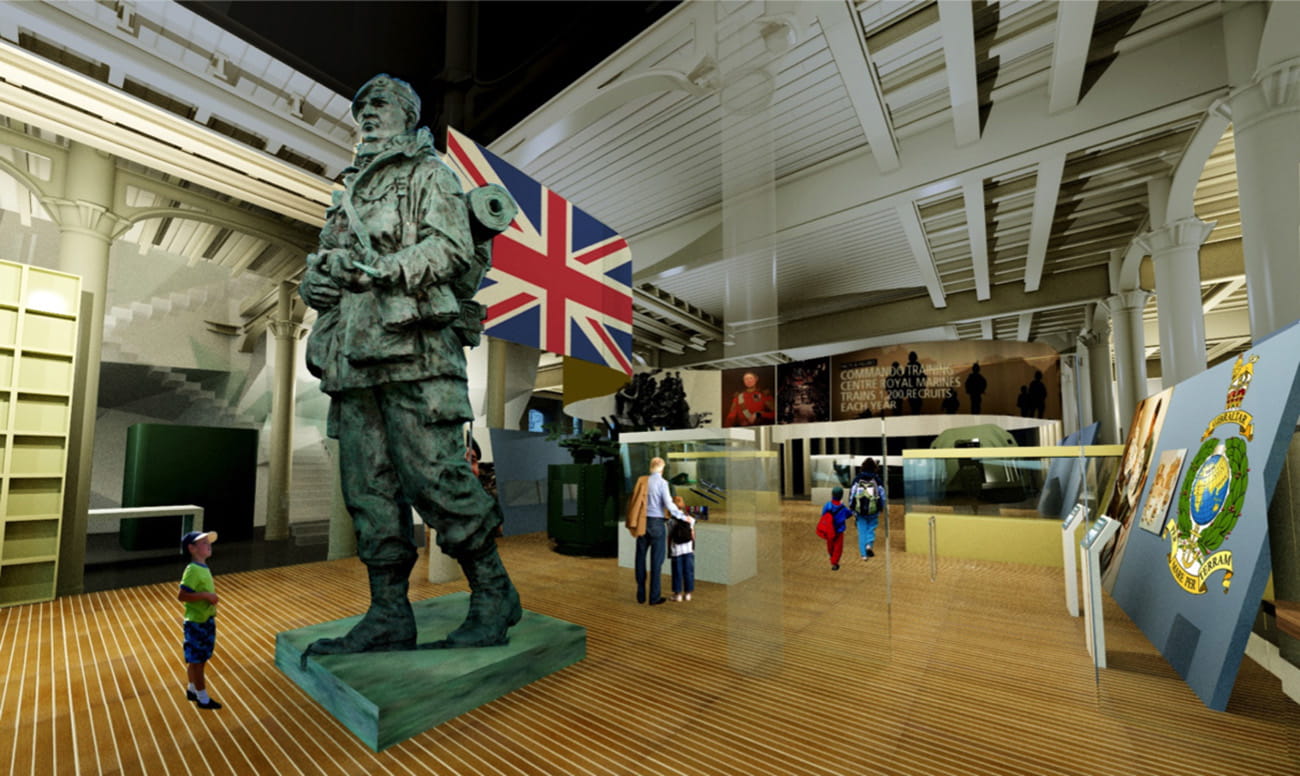
The Royal Marines Museum in Portsmouth stands as a testament to the illustrious history and enduring legacy of the Royal Marines, tracing their journey from their inception in 1664 to their modern-day roles. Established in October 1958, the museum has undergone significant transformations, both in its physical location and its exhibition approach, to provide an immersive and comprehensive experience for visitors.
Historical Background
The museum was initially housed within the historic confines of Eastney Barracks, a site with deep-rooted connections to the Royal Marines. Designed by William Scamp, Eastney Barracks was constructed in the 1860s to serve as the headquarters for the Royal Marine Artillery. The barracks, with its distinctive Victorian architecture, became the home of the museum in 1958, utilizing the former officers’ mess to showcase its extensive collections. This location provided a fitting backdrop, allowing visitors to immerse themselves in the environment where Royal Marines once lived and trained.
Collections and Exhibitions
The museum’s collections are vast and varied, encompassing artifacts that span several centuries. Among its most notable holdings is an extensive array of medals, including over 8,000 displayed in the Medal Room at Eastney Barracks. This collection features all ten Victoria Crosses awarded to members of the Corps, highlighting acts of extraordinary bravery. A particularly significant acquisition was the Naval General Service Medal with Trafalgar clasp, awarded to Lieutenant Lewis Buckle Reeve, who sustained severe injuries during the Battle of Trafalgar and was laid beside the mortally wounded Admiral Nelson aboard HMS Victory.
Beyond medals, the museum boasts a rich assortment of uniforms, weaponry, flags, and personal memorabilia, each narrating a unique story of the Royal Marines’ engagements across the globe. Special exhibitions have delved into various facets of the Corps’ history. For instance, the “Return to Helmand: The Royal Marines in Afghanistan” exhibition provided insights into contemporary military operations, while “Commando Mind” explored the mental resilience and fortitude characteristic of Royal Marines.
Relocation and Future Developments
Recognizing the need to reach a broader audience and provide enhanced accessibility, plans were set in motion to relocate the museum to Portsmouth Historic Dockyard. This move aimed to integrate the Royal Marines’ story within the broader narrative of the Royal Navy’s history. The chosen site for the new museum is the Victorian-era Boathouse 6, a Grade II listed building within the dockyard. This location not only offers increased footfall due to its proximity to other naval attractions but also provides a historically resonant setting for the museum’s exhibits.
The relocation project, known as the Seamore Project, faced challenges, particularly in securing necessary funding. An initial setback occurred when a bid for a Heritage Lottery Fund grant was unsuccessful, leading to delays in the museum’s reopening schedule. However, perseverance paid off, and by July 2024, the project received a significant boost with a £4.6 million grant. With this funding, the museum is on track to open its doors to the public in the summer of 2026. The new museum promises a world-class experience, drawing upon the rich history of the Corps from its origins in 1664 to contemporary times. It aims to illustrate how past achievements and the enduring spirit of the Royal Marines continue to inform and inspire the present and future.
Visitor Experience
The forthcoming Royal Marines Museum is designed to be an engaging and dynamic experience, spanning 400 square meters of exhibition space—the equivalent of one and a half tennis courts. Visitors can anticipate a multimedia and interactive journey through the Corps’ history, featuring personal stories, artifacts, and immersive displays that capture the essence of the Royal Marines’ ethos and operations. The museum will serve as a national center to inspire learning, enjoyment, and engagement with the Royal Marines’ unique history and achievements.
Significance and Legacy
The Royal Marines Museum plays a crucial role in preserving and presenting the heritage of one of the world’s most renowned military forces. By showcasing the evolution, versatility, and valor of the Royal Marines, the museum not only honors those who have served but also educates the public about the Corps’ significant contributions to global military history. As it transitions to its new home within Portsmouth Historic Dockyard, the museum is poised to offer an enriched experience that bridges the past with the present, ensuring that the legacy of the Royal Marines continues to inspire future generations.
In conclusion, the Royal Marines Museum stands as a beacon of historical preservation and education, dedicated to chronicling the storied past of the Royal Marines. Its evolution from Eastney Barracks to its forthcoming location in Portsmouth Historic Dockyard reflects a commitment to accessibility and engagement, ensuring that the tales of courage, resilience, and service associated with the Royal Marines are shared with a wide and appreciative audience.

